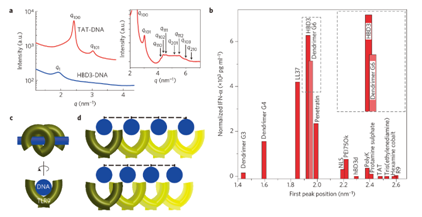"Consider the simple matter of the complexity, we find that new areas of the complicated phenomenon to see a very simple, we find that the new law – Newton”. This quote is proved one more time in a multidisciplinary research, in which researchers from an international team uncover a simple rule that determine which molecules can cause the immune system to become vulnerable to the autoimmune disorders lupus and psoriasis. The breakthrough, described in article published in the journal Nature Materials, could lead to new ways of treating the disorders.
Autoimmune diseases strike when the body attacks itself because it fails to distinguish between host tissue and disease-causing agents, or pathogens. Two such disorders are lupus can damage the skin, joints and organs, causing rashes, hair loss and fatigue; and psoriasis, which causes rashes, lesions and arthritis, and creates an increased risk for cancer and diabetes. When a healthy person is infected by a virus, viral DNA can active immune cells via a receptor called TLR9. The receptor triggers the cells to send signaling molecules called interferons to initiate a powerful defensive response. In people with lupus or psoriasis, these cells are activated by their own DNA or self-DNA.
Using synchrotron X-ray scattering and other techniques, researchers determined that a broad range of molecules, both organic and inorganic, can organized self-DNA into a liquid crystalline structure that binds strongly to the TLR9 receptors – like the teeth on either side of a zipper. This structure protects the DNA from becoming degraded and greatly amplifies the body’s immune response.
"Our research has identified a set of rules that tell us what types of molecules or materials can set off this aspect of the immune system, this new knowledge will make it easier to design new therapeutic strategies to control immune responses”, Gerard Wong said, who is the lead scientist in this study from UCLA. Another lead scientist is Fan Jin from the USTC and Nathan Schmidt from UCLA.

Contact:
Fan JIN (金帆)
Room 16004,
Hefei National Laboratory for Physical Sciences at Microscale
University of Science & Technology of China, Auhui, P.R.China; 230026
Phone: +86-551-63606925
Fax: +86-551-63606743
Email: fjinustc@ustc.edu.cn; pizzball@gmail.com.